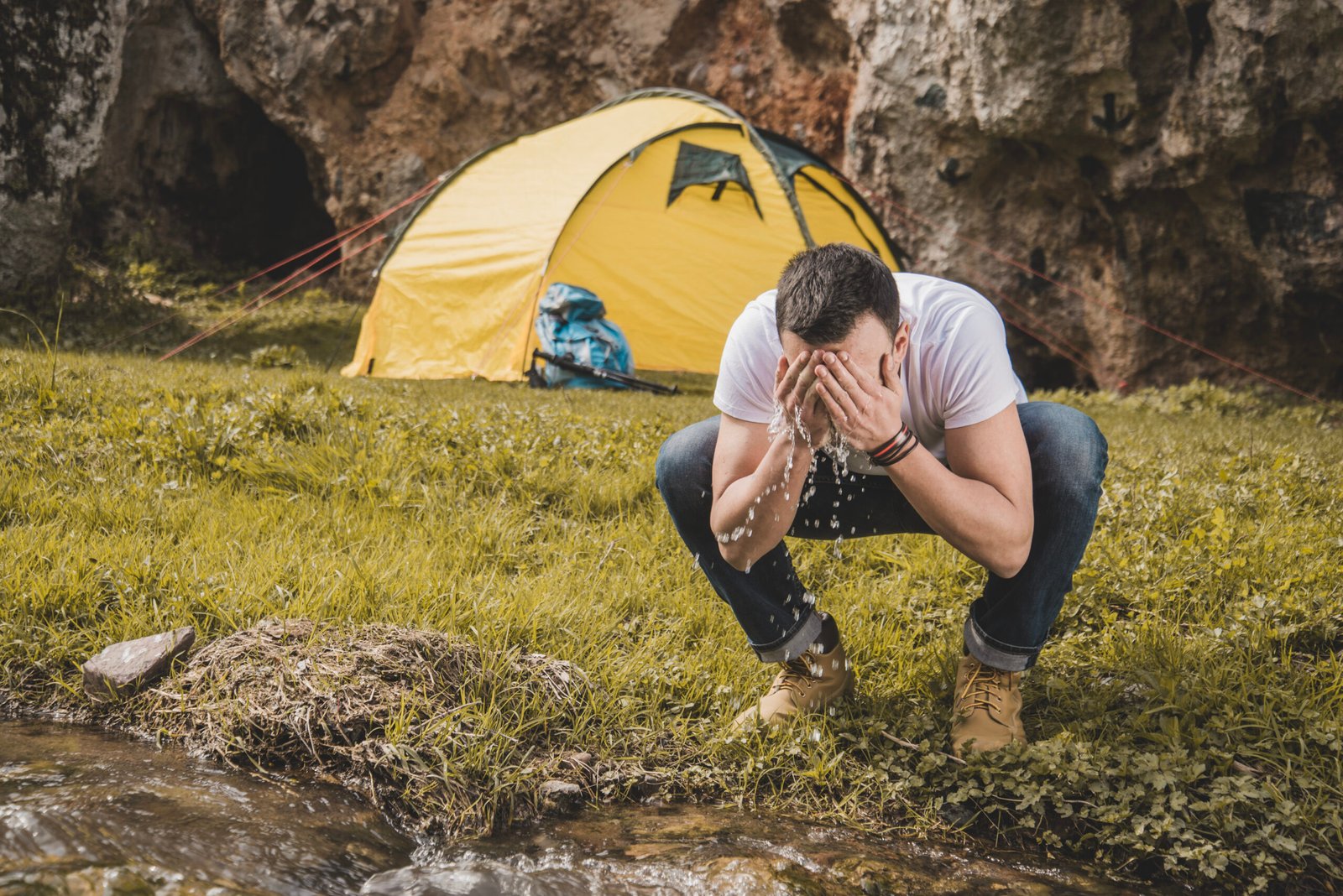You’re spending $40 to $60 per night at campgrounds. That adds up to over $1,200 each year just for a place to pitch your tent or park your RV. And for what? A crowded spot next to someone’s generator and a bathroom that’s always out of toilet paper.
The government owns millions of acres where you can camp for free. These aren’t sketchy loopholes or gray areas. These are legitimate programs designed to give you access to public land.
The dispersed camping on national forest land and Boondocking in Bureau of Land Management areas. Even free camping through volunteer programs that pay you back in site credits.
You just need to know where to look and how these free camping loopholes work. These methods are legal, tested, and some of them even come with better views than those expensive private campgrounds.
Don’t Want You Discovering These Insane Free Camping Loopholes, Not Get Busted.”
What Are Free Camping Loopholes?
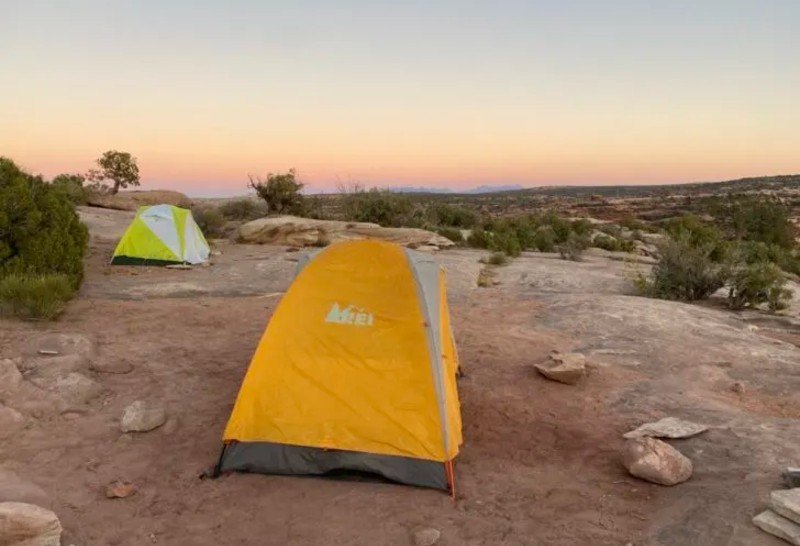
You’re tired of paying $40-80 per night just to pitch a tent. Then there are completely legal ways to camp for free that most people never hear about.
These aren’t actually “loopholes” in the sneaky sense. They’re legitimate camping options written into federal law. The government set aside 193 million acres of public land for free camping. Most campers just don’t know these rules exist.
i. The Difference Between Regular Campgrounds and Free Camping Spots
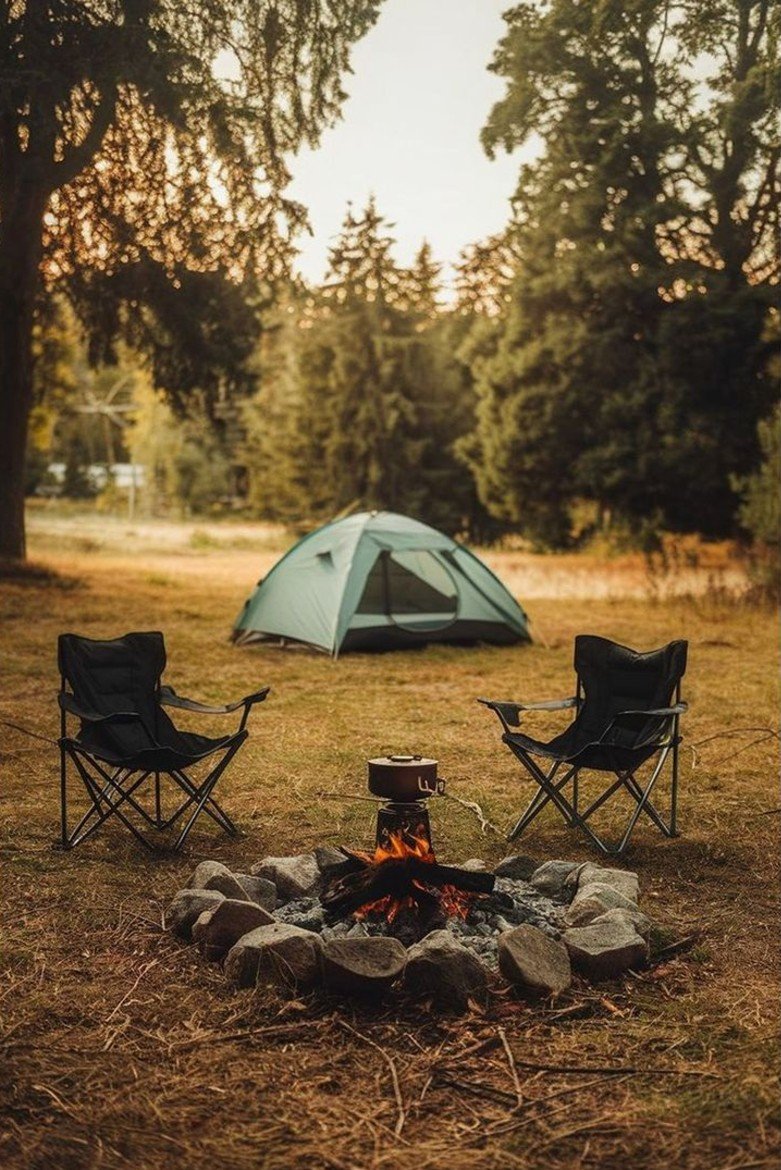
Developed campgrounds have amenities. You get picnic tables, fire rings, bathrooms, and water spigots. You pay for these services. Dispersed camping (also called free camping spots) gives you raw land. No amenities. No fees. You bring everything you need and leave everything as you found it.
The legal framework is simple. Federal agencies like the Forest Service and the Bureau of Land Management manage most free camping areas. The basic rule: you can stay up to 14 days in most spots, then you need to move at least 25 miles away.
ii. Why Don’t You Hear About These Options?
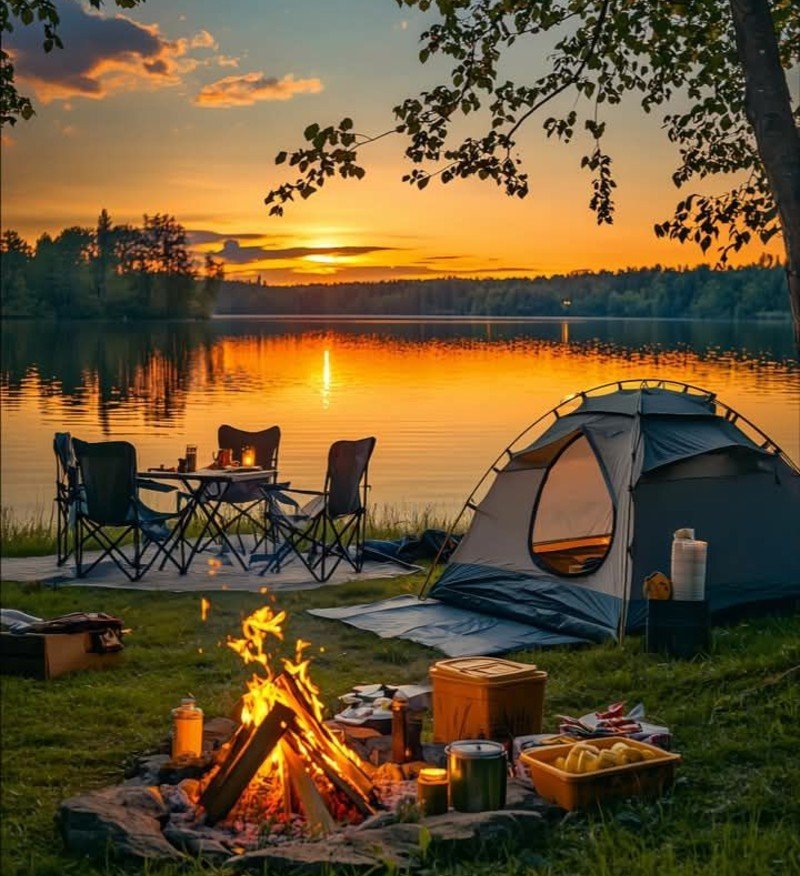
Campground businesses don’t advertise free alternatives. Park rangers focus on managing developed areas where most visitors go. The average camper saves $300-500 annually using these methods, but that information doesn’t spread through normal camping channels.
Safety comes first with free camping. You’re often miles from cell service and emergency help. Tell someone your plans. Bring extra water, food, and supplies. Check weather conditions and road access before you go.
Leave No Trace principles matter more than ever. Take out all trash. Use existing fire rings or bring a fire pan. Keep human waste 200 feet from water sources. Pack out toilet paper.
The difference between legal free camping and trespassing comes down to research. Always verify that your chosen spot allows camping. Check for seasonal closures, fire restrictions, and access rules. Some areas require permits even for free camping. Others have group size limits or vehicle restrictions. Five minutes of research prevents problems later.
The bottom line. Free camping isn’t about breaking rules or finding secret spots. It’s about using public land the way it was designed to be used. You trade amenities for money savings and often get better scenery in return.
Most importantly, these aren’t temporary deals or limited-time offers. These are permanent public land policies that have existed for decades. Once you learn how to find and use free camping spots safely, you’ll cut your camping costs dramatically.
The 14-Day Forest Service Loophole
The 14-day camping rule lets you do exactly that on National Forest land. You can camp free for 14 consecutive days in any National Forest. When your time is up, move at least 25 miles away from your original spot. Then you can start another 14 days.
The math works out perfectly for long-term travelers. Most National Forests cover hundreds of square miles. Moving 25 miles often keeps you in the same forest system. You get new scenery every two weeks while staying in your favorite region.
i. Coconino National Forest (Arizona)
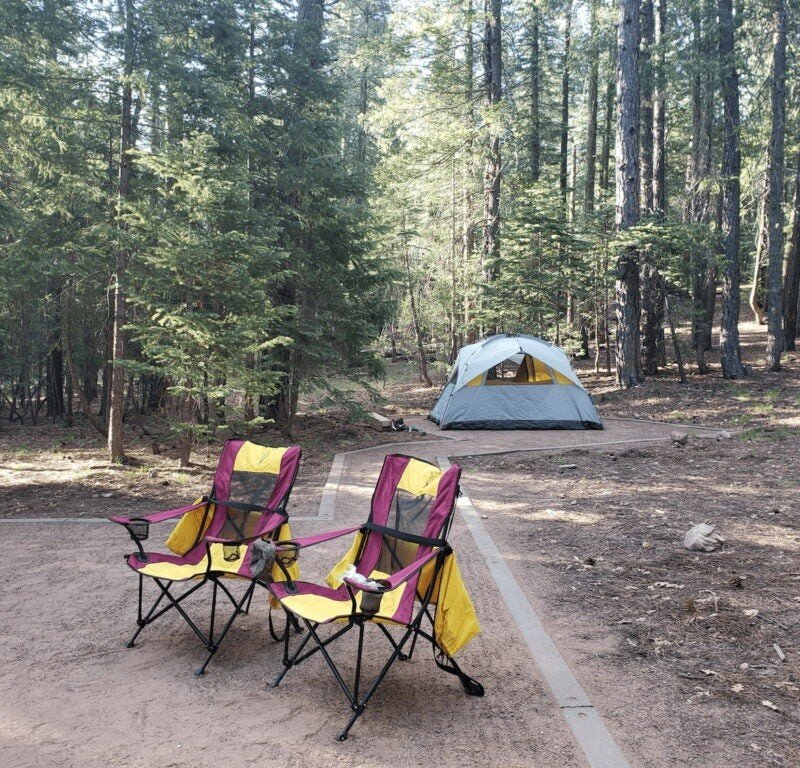
Surrounds Sedona and Flagstaff. You’ll find dozens of dispersed camping spots with red rock views. Try Forest Road 525 near Sedona (GPS: 34.8059° N, 111.7604° W) for easy access and stunning sunsets.
ii. Kaibab National Forest (Arizona)
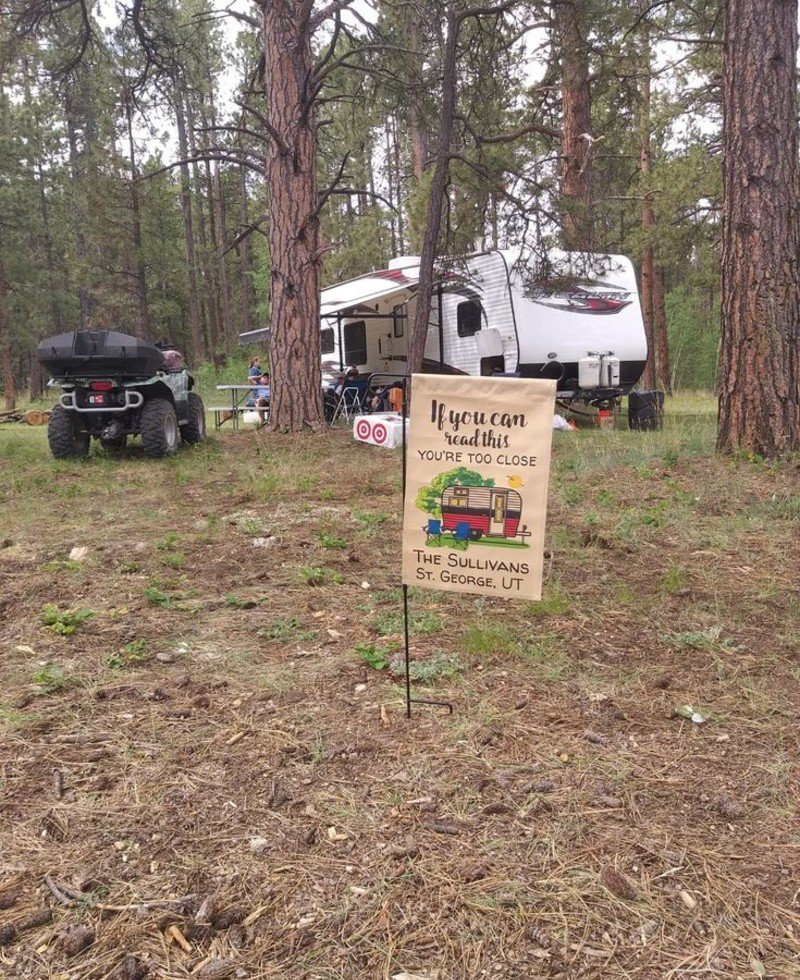
Offers cooler temperatures near the Grand Canyon. The forest has two sections, north and south of the canyon. You can easily move between areas every 14 days.
iii. San Juan National Forest (Colorado)
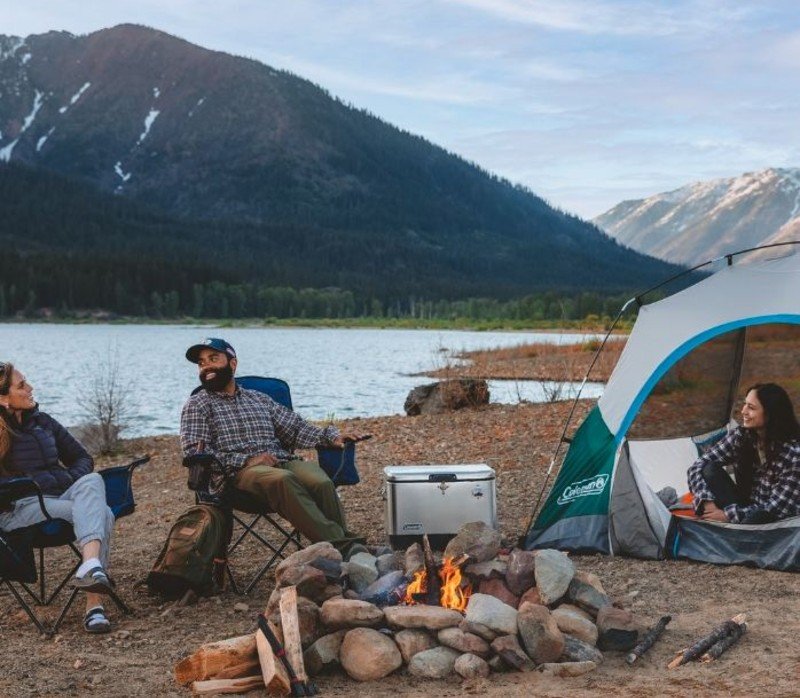
Gives you mountain camping near Durango. Dispersed sites along Forest Road 571 (GPS: 37.4419° N, 107.8731° W) put you close to hiking trails and fishing spots.
For winter desert camping, head to lower elevations in Arizona and California. Quartzsite area forests stay warm when mountain sites become snowy. Many snowbirds use this strategy from November through March.
What you can do during your 14-day stay
i. Set up camp anywhere that’s not posted as restricted
ii. Build campfires in existing rings (when fire restrictions allow)
iii. Park RVs and trailers in most areas
iv. Bring pets (keep them leashed)
v. Run generators during daytime hours
What’s not allowed
i. Cutting live trees or vegetation
ii. Digging trenches or modifying the land
iii. Dumping gray water directly on the ground
iv. Staying past 14 days without moving
v. Setting up permanent structures
iv. ProTip For RV Owners

Many forest roads work fine for smaller RVs (under 30 feet). Bigger rigs need more research. Call the local ranger district before you go. The key to success is planning your moves ahead of time. Scout your next location before your 14 days end. Download offline maps because cell service can be spotty.
Some forests get busy during peak seasons. Popular areas near Sedona and Colorado ski towns fill up fast. Have backup locations ready. The 14-day camping rule works best when you’re flexible with your schedule. Bad weather, crowded spots, or equipment issues might force you to adjust plans. Treat it as part of the adventure.
This system lets dedicated campers stay in National Forest areas for months at essentially no cost. Just remember to stock up on supplies and water before heading to remote locations.
BLM Land: The Ultimate Free Camping Secret
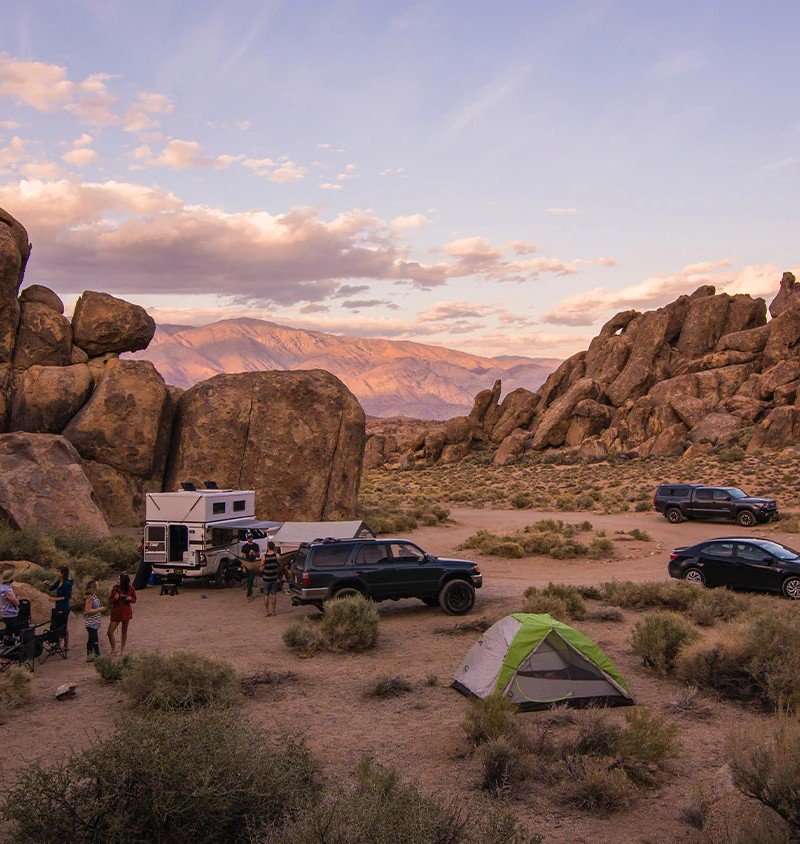
You just discovered the biggest free camping opportunity in America. The Bureau of Land Management controls 245 million acres of public land. Here’s the amazing part: 99% of it allows free camping.
BLM camping beats National Forest camping in two big ways. First, you can stay up to 14 days like forest land, but some areas let you stay longer. Second, BLM land often sits in deserts and wide open spaces where you can spread out more.
BLM camping policies are simple. Camp on any BLM land unless signs say otherwise. Stay up to 14 days, then move at least 25 miles away. No permits needed for basic camping. You can drive almost anywhere unless barriers block the path.
Most BLM land sits in western states with great weather year-round. California, Nevada, Arizona, and Utah have the most boondocking locations on BLM property. Long-Term Visitor Areas (LTVAs) change everything for winter campers. These special BLM zones let you stay up to 7 months for one low fee. Pay $180 for the season and camp from September 15 to April 15.
Quartzsite, Arizona, is the most famous LTVA. Every winter, thousands of RVs gather in the desert. You get basic amenities like dump stations and potable water. The town has grocery stores, restaurants, and the famous rock and gem shows.
Yuma East and West LTVAs offer similar setups near the California border. These areas stay warmer than Quartzsite and have better cell phone coverage. Many snowbirds prefer Yuma for the convenience.
Finding BLM land takes the right tools. Regular camping websites don’t list most BLM camping spots because they’re not developed campgrounds. The Free Roam app shows BLM boundaries on your phone’s map. The app works offline, which matters when you’re miles from cell towers. It marks different land ownership types, so you know exactly where you can camp.
Campendium has user reviews of specific BLM boondocking locations. Real campers post photos, GPS coordinates, and tips about road conditions. This helps you avoid spots that look good on paper but have problems.
iOverlander works great for finding remote BLM camping spots along your travel route. The app includes details about water availability, cell coverage, and whether big RVs can access the area.
Recreation.gov lists the few BLM areas that require reservations, like some group camping spots and developed campgrounds.
i. BLM Camping Isn’t Perfect
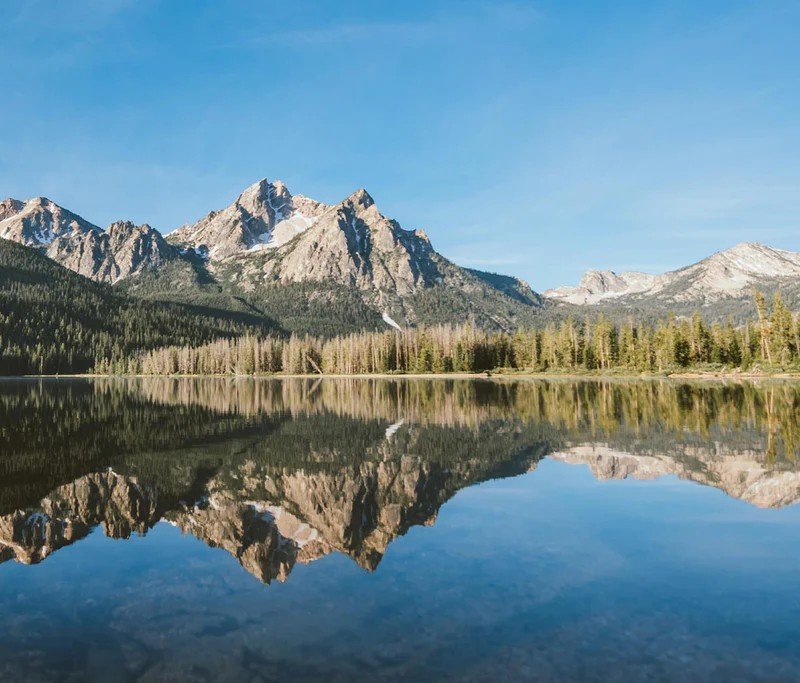
Many spots have no shade, limited water sources, and rough access roads. Desert areas can be brutally hot in summer and surprisingly cold in winter. Windstorms kick up dust that gets into everything.
Some popular BLM areas get crowded, especially near cities like Phoenix and Las Vegas. You might find yourself camping next to dozens of other RVs instead of enjoying solitude.
Road conditions vary wildly. Your small car might handle some BLM roads fine, while others need high-clearance vehicles. Always check recent reviews and have backup plans.
The payoff makes these minor hassles worthwhile. You can camp in spots with million-dollar views for zero cost. Desert sunsets, mountain backdrops, and complete silence beat most paid campgrounds.
BLM land gives you the most camping freedom available in America. Once you try it, paying campground fees feels wasteful.
Highway Rest Areas and Overnight Parking Laws
You’re driving cross-country and need somewhere to sleep. Hotels cost $80-120 per night. Campgrounds require reservations that you don’t have. Here’s how to legally park overnight for free.
i Rest Area Policies Change By State
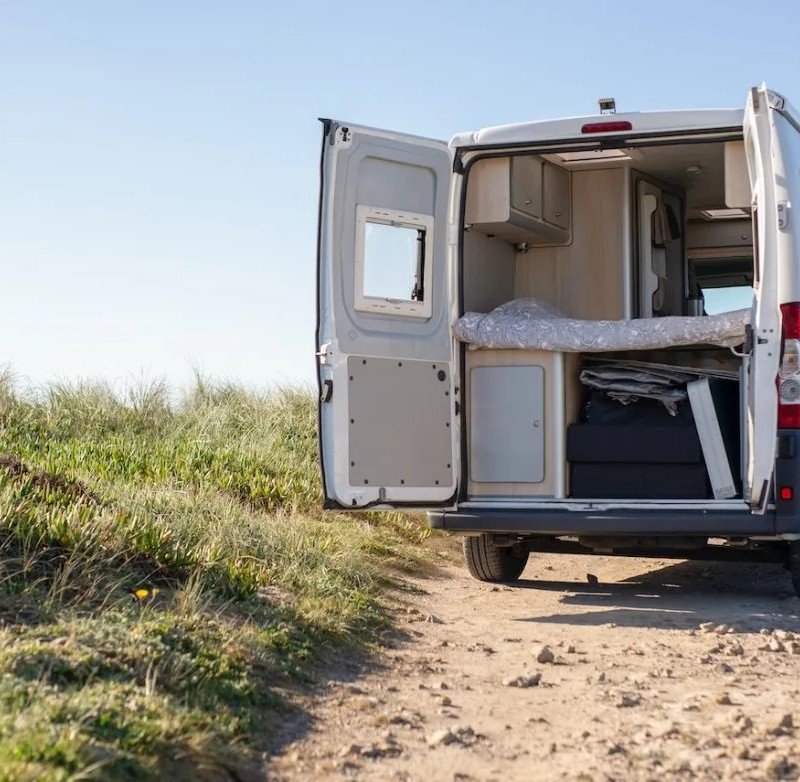
Some welcome overnight parking. Others ban it completely. The difference can mean the difference between a good night’s sleep and a ticket.
ii. States That Allow Rest Area Overnight Parking
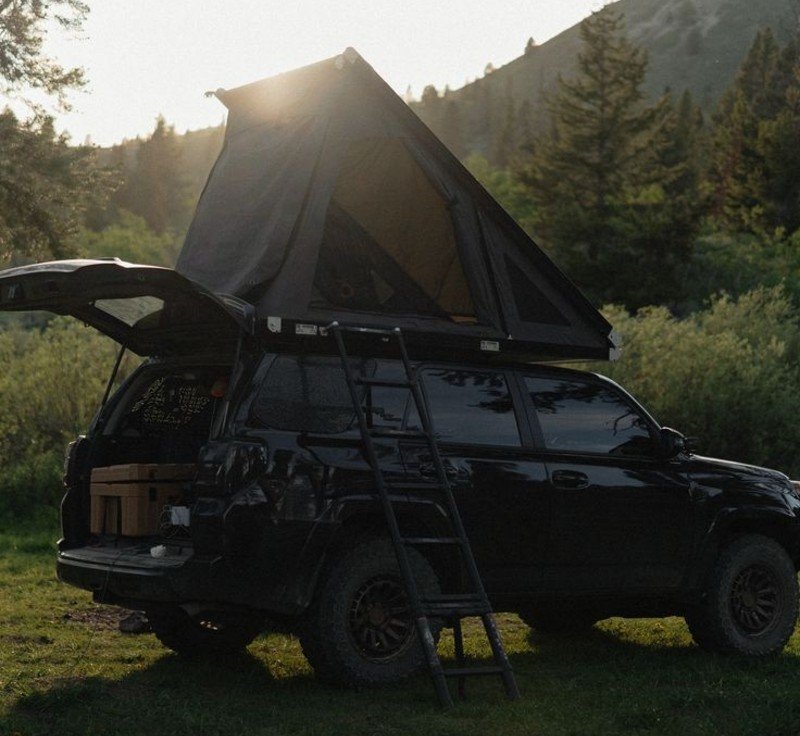
Montana, North Dakota, Wyoming, Nevada, and parts of Texas let you sleep in rest areas. Most have 8-12 hour limits. You can’t set up camp chairs or awnings, but sleeping in your vehicle is fine.
iii. States That Ban Overnight Rest Area Parking
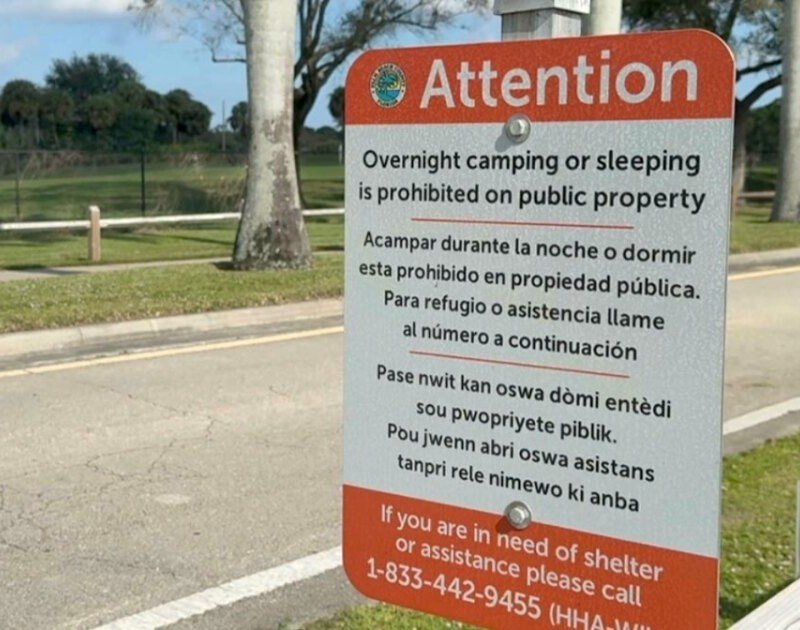
California, Florida, and most eastern states prohibit overnight stays. They post signs and sometimes patrol at night. Getting caught means fines and being asked to move immediately.
iv. Walmart Overnight Parking Works Differently Than Most People Think
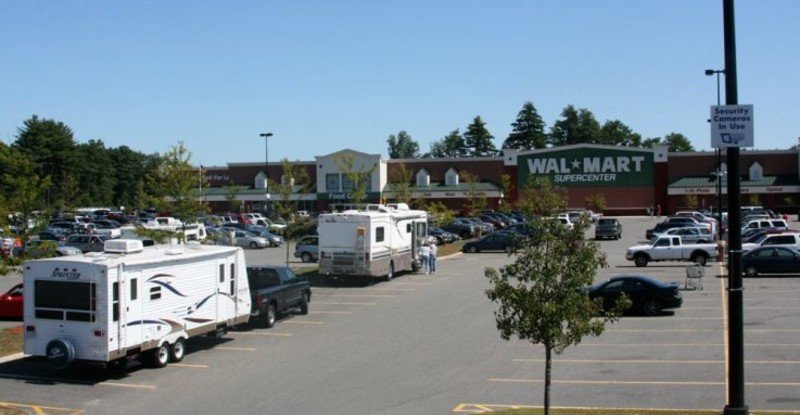
The corporate policy allows overnight RV parking, but individual store managers can override this rule. About 70% of Walmart locations still allow it.
v. Major Truck Stop Chains Offer The Best Overnight Options

Pilot Flying J welcomes RVs and car campers. Many locations have 24-hour facilities, showers, and food options. Park in designated RV areas, not truck spaces.
Love’s Travel Stops allow overnight parking at most locations. They often have better bathroom facilities than rest areas and more food choices.
TA/Petro centers cater to truckers but allow RVs. Some charge parking fees ($10-15), but you get access to showers and truck stop amenities.
24-hour businesses that often allow overnight parking:
i. Cracker Barrel restaurants (call ahead)
ii. Some Home Depot and Lowe’s stores
iii. 24-hour fitness centers
iv. Hospital parking lots (check with security)
Legal considerations matter more than convenience. Private property owners can tow your vehicle without warning. Public rest areas follow state laws, which vary wildly. Always check local regulations before settling in for the night.
Time limits are strictly enforced in some areas. Many rest areas have 2-4 hour limits during busy travel seasons. Truck stops usually don’t enforce time limits if you’re a paying customer.
Apps that help you find overnight parking spots: iOverlander lists user-verified overnight locations. FreeRoam shows rest areas and truck stops on offline maps. Campendium has reviews of overnight parking experiences.
National Park and Monument Backdoor Access
National park campgrounds cost $30-50 per night and book up months in advance. You want to visit Zion or Yellowstone, but can’t get reservations. Here’s the solution: camp for free on public land right outside park boundaries.
Most famous national parks sit next to other public lands. National Forests, BLM areas, and state lands often touch park borders. You can camp free on these adjacent lands and drive into the park each day.
This strategy saves you serious money. A week at Grand Canyon’s Mather Campground costs $210. Free camping outside the park costs zero. You’re often just 15-30 minutes from park entrances.
i. Free Camping Near Zion National Park
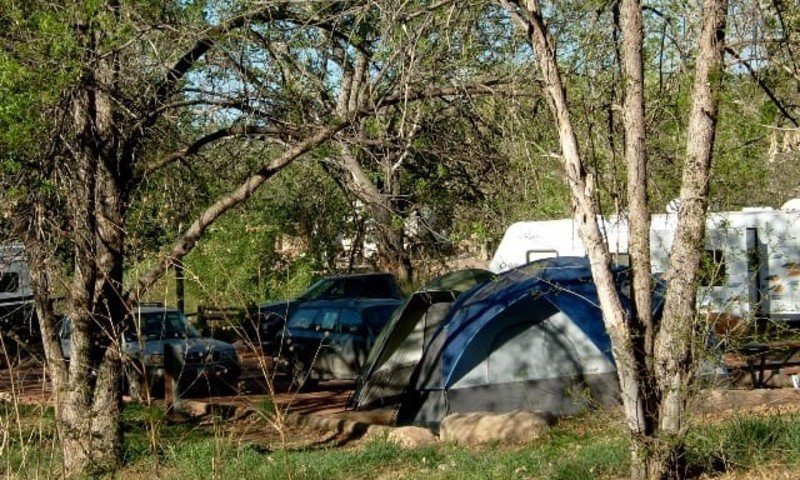
BLM land along Kolob Terrace Road offers several dispersed camping spots. Try the area near GPS coordinates 37.3581° N, 113.1089° W. You’ll find level ground for RVs and easy access to Zion’s back entrance.
For a closer option, camp on BLM land east of the park near Highway 9. Look for spots around GPS 37.2089° N, 112.9234° W. This puts you 20 minutes from the main visitor center.
ii. Dispersed Sites Around The Grand Canyon
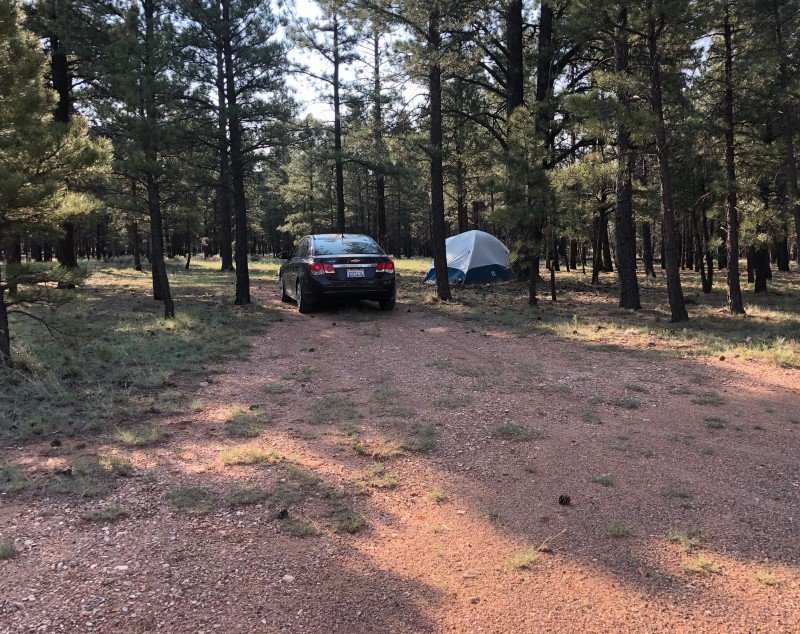
Kaibab National Forest surrounds both sides of the Grand Canyon. South of the park, Forest Road 328 has dozens of free camping spots. Try the area near GPS 35.9456° N, 112.1456° W for easy access to the South Rim entrance.
For North Rim access (open May-October), camp on Forest Road 22 near GPS 36.2089° N, 112.0567° W. This keeps you close to the less-crowded North Rim entrance.
iii. Yellowstone Area Forest Service Roads
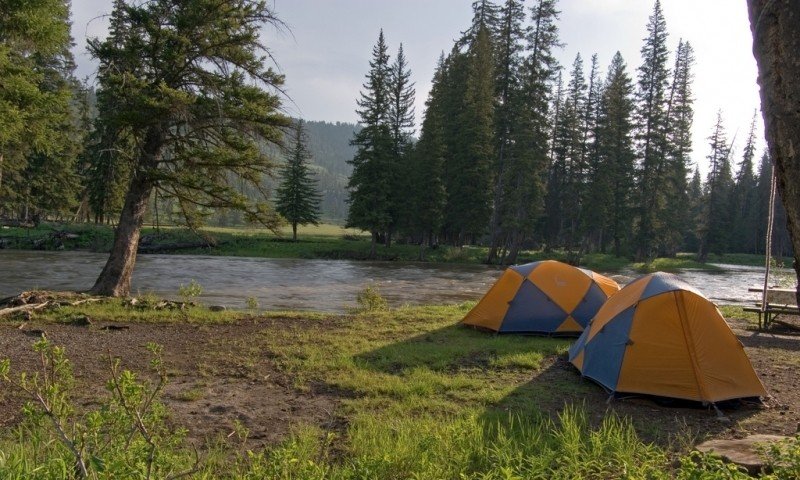
Gallatin National Forest borders Yellowstone’s west entrance. Camp along Forest Road 167 near GPS 44.8234° N, 111.1567° W. You’re 30 minutes from Old Faithful and major attractions.
Near the north entrance, try Gallatin Forest roads around Gardiner, Montana (GPS 45.0456° N, 110.7089° W). These spots put you minutes from Mammoth Hot Springs.
National Monument dispersed camping rules are often more flexible than National Parks. Many monuments allow backcountry camping with permits. Some, like Grand Staircase-Escalante, have vast areas open to free dispersed camping within monument boundaries.
State park alternatives work well near some national parks. Utah state parks near Zion cost less than national park campgrounds and often have better amenities. Nevada and Montana state parks offer similar savings near other popular parks.
What to expect with backdoor camping:
i. No amenities (bathrooms, water, tables)
ii. Rough access roads in some areas
iii. Amazing views are often better than paid campgrounds
iv. More wildlife encounters
v. Complete quiet after the tourist buses leave
Potential downsides include longer drives to park entrances and limited cell service. Some forest roads become impassable during the snow season. Always check road conditions and have backup plans.
Research land boundaries before you go. Apps like FreeRoam show exactly where different land types meet. You don’t want to camp inside the national park where it’s prohibited accidentally.
This backdoor strategy works best during peak seasons when park campgrounds stay full. You get the same park access at a fraction of the cost, plus you often camp in more scenic spots than crowded park campgrounds offer.
Military Base and Government Land Access
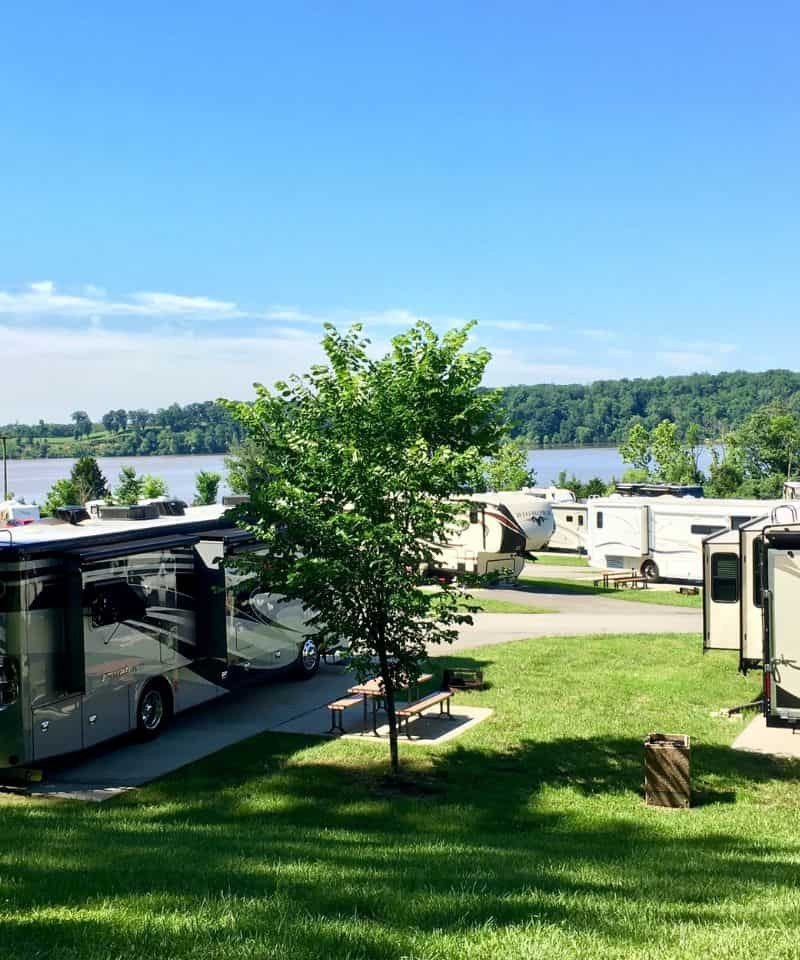
You served your country, or you’re over 62. You deserve camping discounts that most people don’t know exist. Government programs can cut your camping costs in half or eliminate them.
Veteran camping programs offer serious savings. Many military bases allow veterans to use their campgrounds for $10-20 per night. These facilities often beat commercial campgrounds with better security, cleaner bathrooms, and full hookups.
Call the base MWR (Morale, Welfare and Recreation) office before you go. Some bases require reservations. Others operate on a first-come basis. You’ll need a military ID or veteran ID cards for access.
America the Beautiful Senior Pass costs $80 for life if you’re 62 or older. This pass gets you free entrance to all national parks, plus 50% off camping fees at federal campgrounds. The pass pays for itself after just 3-4 camping trips.
America the Beautiful Military Pass is completely free for active duty, reserves, and veterans. Same benefits as the senior pass, but no age requirement. Get yours at any national park entrance or online.
Corps of Engineers campgrounds offer the best government camping deals. The Army Corps manages lakes and rivers across America. Their campgrounds cost $10-25 per night with the military or senior pass discount.
Corps lakes often have excellent fishing, boating, and swimming. Many sites include full hookups, clean restrooms, and boat launches. Quality beats most private campgrounds at half the price.
State trust land policies vary by state but can offer camping opportunities. Arizona, New Mexico, and Utah sell annual permits that allow camping on state trust lands. These permits cost $15-30 per year for unlimited camping on thousands of acres.
University campuses sometimes allow overnight parking in specific areas. Call campus security before assuming it’s okay. Some universities near popular destinations offer this as a community service.
Government facility overnight policies exist at some locations. Bureau of Reclamation sites, wildlife refuges, and research stations occasionally allow overnight stays. Always call ahead and get written permission.
How to verify permissions before you go:
i. Call facility offices directly during business hours
ii. Get confirmation emails when possible
iii. Check official websites for current policies
iv. Have backup plans if policies change
The catch with government camping: Rules change frequently. Budget cuts close facilities without warning. What worked last year might not work this year.
But when these programs work, they offer unbeatable value. Clean facilities, great locations, and prices that regular campgrounds can’t match make government land access a worthwhile investment, even if it requires extra research time.
Urban and Suburban Free Camping Strategies
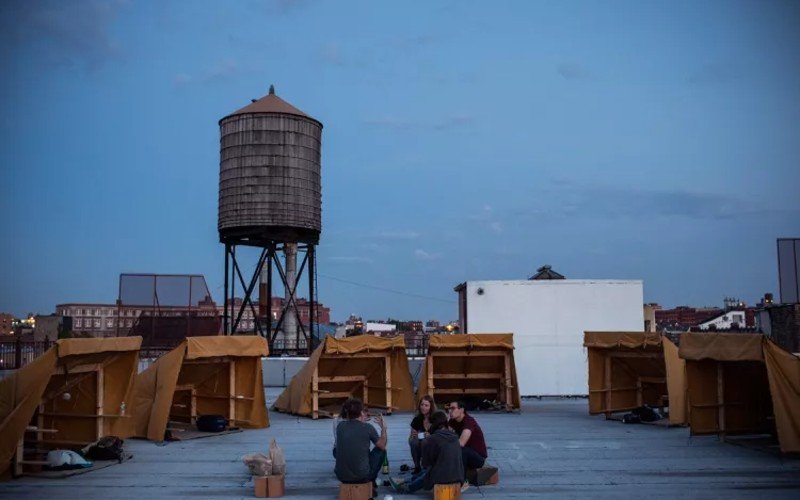
You’re road-tripping through expensive cities where hotels cost $150+ per night. Campgrounds are 50 miles away. You need safe, legal places to sleep in your vehicle without breaking laws or getting hassled.
Urban camping requires different strategies from wilderness camping. You’re looking for permission-based parking, not hidden spots. The key is building relationships and following local rules.
Churches offer the best urban camping partnerships. Many congregations welcome travelers who need safe overnight parking. Call ahead and explain your situation. Most churches say yes if you’re respectful and quiet.
Ask to speak with the pastor or office manager. Explain that you’re passing through and need a safe place to sleep in your vehicle. Offer to make a small donation or attend services if you’re staying Sunday night.
24-hour gym parking lots work well if you’re a member. Planet Fitness, Anytime Fitness, and LA Fitness locations often allow members to sleep in their parking lots. The unofficial rule: use the facilities, keep a low profile, and don’t overstay.
Some gym staff members are more welcoming than others. Ask the front desk during slow hours about their overnight parking policy. Many will say it’s fine as long as you don’t cause problems.
Hospital parking areas have mixed policies. Emergency room parking lots stay busy 24/7, so one more vehicle doesn’t stand out. Some hospitals explicitly allow overnight parking for family members of patients.
Call the main hospital number and ask about overnight parking policies. Some charge $5-10 per night but provide security and bathroom access. Never park in emergency vehicle zones or staff-only areas.
University campus overnight rules vary by school. Many colleges allow alumni or visitors to park overnight in designated areas. Summer break periods offer more flexibility when student parking demand drops.
Call campus security before you arrive. Some universities have specific lots for overnight visitors. Others require advance registration or small fees.
i. Mobile Apps Help You Find Urban Camping Spots That Other Travelers Have Verified
iOverlander has urban filters that show city camping options submitted by real users. Reviews include details about safety, noise levels, and whether you need permission.
Campendium urban filters let you search for overnight parking in specific cities. User photos show you exactly what to expect and how to find the spots.
Local Facebook groups and forums provide the best insider information. Search for “[City Name] RV Groups” or “Van Life [State]” to find communities that share current parking information.
The reality of urban camping. It’s less comfortable than wilderness camping but much safer than sleeping in random parking lots. You’re trading scenery for security and legal peace of mind.
Always follow these urban camping rules:
i. Get explicit permission when possible
ii. Keep curtains drawn and lights off after dark
iii. Don’t set up chairs, tables, or camping gear outside
iv. Leave early (before 8 AM) to avoid morning traffic issues
v. Have backup locations ready in case your first choice doesn’t work
Urban camping works best as an occasional strategy, not a long-term lifestyle. Use it to save money during expensive city visits while maintaining safety and legality.
Seasonal Work and Volunteer Opportunities
You want to camp for months, not days. But even free camping has costs – gas for moving every 14 days, supplies, and wear on your vehicle. Here’s how to get paid while someone else covers your camping costs.
i. Campground Host Jobs Offer The Perfect Trade
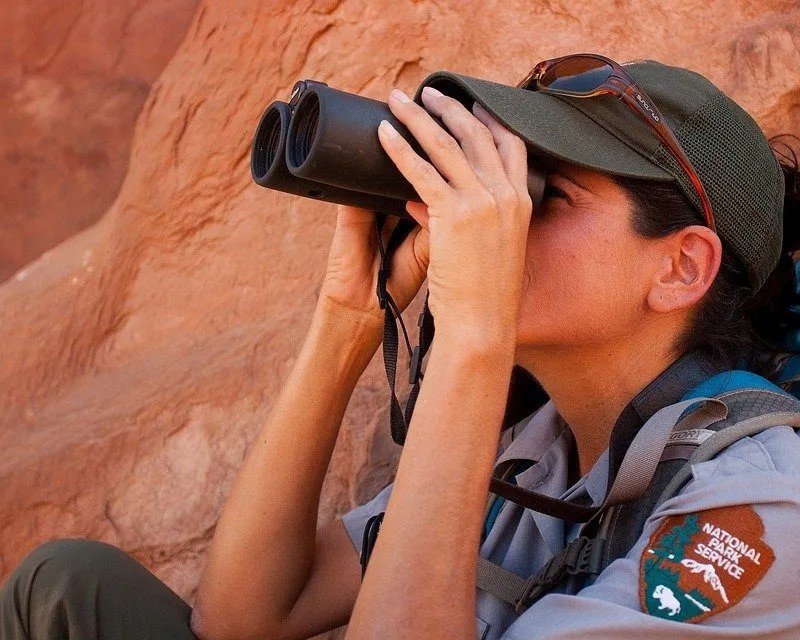
You get a free campsite, often with full hookups, in exchange for 20-30 hours of light work per week. Host duties include greeting campers, cleaning bathrooms, and performing basic maintenance tasks.
Most campground host jobs run 3-6 months during peak seasons. Popular locations like Yellowstone, the Grand Canyon, and California state parks fill up fast. Apply 6-12 months ahead for the best spots.
Pay varies widely. Some positions offer just the free campsite. Others pay $12-15 per hour plus the site. Even unpaid positions save you $1,000+ in camping fees over a season.
ii. National Park Volunteer Programs Combine Free Camping with Meaningful Work

The Volunteer-In-Parks program places people in jobs ranging from visitor center help to trail maintenance.
Volunteers usually get free camping plus small stipends for food and expenses. Popular programs at Grand Canyon, Yellowstone, and Yosemite require early applications. Less famous parks often need volunteers with shorter notice.
iii. Seasonal Work With Camping Perks Exists Beyond Traditional Campground Jobs
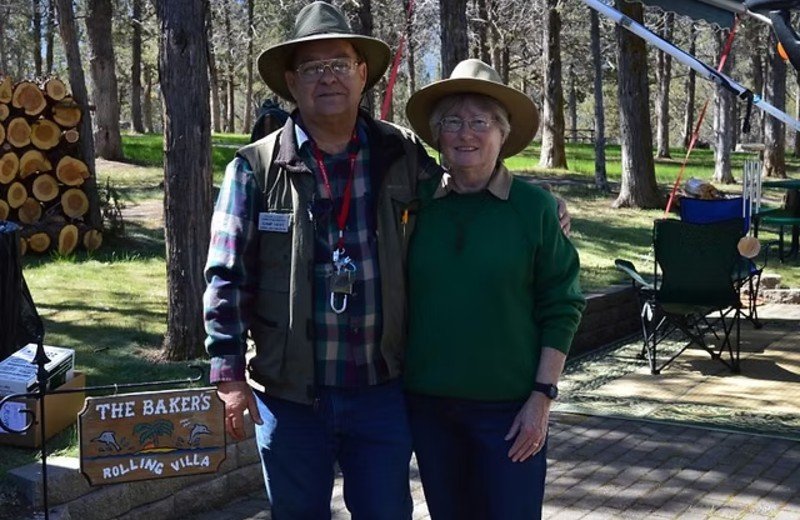
Ski resorts, summer camps, and tourist attractions often provide employee camping areas or RV parking.
Amazon’s CamperForce program hires RV owners for warehouse work during peak seasons. You get hourly wages plus free camping at or near Amazon facilities. Work is physical, but it pays well above minimum wage.
WWOOF (World Wide Opportunities on Organic Farms) and work exchange programs let you trade labor for camping spots. Farms, ranches, and eco-resorts across America need temporary help in exchange for camping space and meals.
Work includes farming, animal care, construction, and hospitality tasks. Most arrangements require 4-6 hours of work per day. You get free camping, meals, and hands-on learning experiences.
Long-term camping through employment works best for people with flexible schedules. Retirees, remote workers, and seasonal employees make ideal candidates for these programs.
You’re committed to specific locations and schedules. Bad weather, difficult supervisors, or personality conflicts can make these arrangements stressful. Always have backup plans and emergency funds.
But when it works, volunteer camping gives you the best of both worlds. You save thousands in camping costs while earning money or learning new skills. Many participants return to the same positions year after year, building relationships and favorite locations.
FAQs
Is free camping legal, or will I get in trouble?
Yes, free camping is completely legal on public lands. The federal government set aside 193 million acres of BLM land and National Forest land specifically for public use, including camping. These aren’t “loopholes,” they’re official policies written into federal law.
How much money can I realistically save with free camping?
The average camper saves $300-500 per year using free camping methods. If you camp frequently, savings can reach $1,500+ annually. Regular campgrounds cost $30-80 per night, while dispersed camping costs nothing.
What’s the catch with free camping? What am I giving up?
Free camping means no amenities. You won’t get bathrooms, showers, picnic tables, or electrical hookups. You need to bring your water and pack out all trash. Many free camping spots require driving on rough dirt roads. Cell phone service is often limited or nonexistent.
Is free camping safe, especially for solo travelers?
Free camping is generally safe but requires more preparation than developed campgrounds. You’re often far from help if problems arise. Always tell someone your plans and expected return date.
